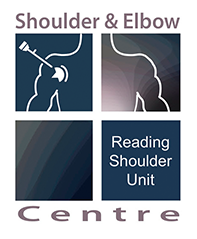Verso® Stemless Bone Preserving Reverse Geometry Total Shoulder Replacement (Innovative Design Orthopaedics Ltd.)
Abstract
Reverse shoulder replacements are gaining popularity in recent years with good results. However, high complication rate, high incidence of glenoid notching, and significant re-operation rate are of concern. Revision surgery poses a potential serious problem in stem removal. The Verso shoulder is a stemless reverse prosthesis that differs from all other known implants. The Verso stemless reverse prosthesis is bone preserving with metaphyseal fixation and tapered screw glenoid baseplate fixation. It is a simple implant with simple surgical technique, yet with wide versatility and adaptability. Between 2005 and 2010, 102 patients were operated for severe cuff deficiency and arthritis with stemless reverse total shoulder prosthesis. The mean age at surgery was 74.4 years (range 38–93 years). The etiology for surgery was cuff arthropathy, fracture sequelae, rheumatoid arthritis, failed RC repair, revision for loosening of anatomic prosthesis or for cuff failure with anatomic prostheses and for acute trauma. Patients had good pain relief and high satisfaction score, with significant improvement of function and Constant score. The mean range of movement improved to 128.5° elevation, 50.8° external rotation, and 64.6° internal rotation. This different design, without stem, shows encouraging excellent midterm results with excellent pain relief and restoration of good active range of motion and good shoulder function. The Verso design principles seem to result in low incidence of glenoid notching and improved rotational movements with return to full activities including sports. Radiologic assessment showed only 21.4 % of glenoid notching (mainly mild), no lucencies around the implants and no signs of stress shielding. With this stemless bone preserving procedure, all options remain open for future surgery if deemed necessary as bone stock is preserved, and therefore, this prosthesis may be used in younger patients as well.
Reverse shoulder replacements are gaining popularity in recent years with good results. However, high complication rate, high incidence of glenoid notching, and significant re-operation rate are of concern. Revision surgery poses a potential serious problem in stem removal. The Verso shoulder is a stemless reverse prosthesis that differs from all other known implants. The Verso stemless reverse prosthesis is bone preserving with metaphyseal fixation and tapered screw glenoid baseplate fixation. It is a simple implant with simple surgical technique, yet with wide versatility and adaptability. Between 2005 and 2010, 102 patients were operated for severe cuff deficiency and arthritis with stemless reverse total shoulder prosthesis. The mean age at surgery was 74.4 years (range 38–93 years). The etiology for surgery was cuff arthropathy, fracture sequelae, rheumatoid arthritis, failed RC repair, revision for loosening of anatomic prosthesis or for cuff failure with anatomic prostheses and for acute trauma. Patients had good pain relief and high satisfaction score, with significant improvement of function and Constant score. The mean range of movement improved to 128.5° elevation, 50.8° external rotation, and 64.6° internal rotation. This different design, without stem, shows encouraging excellent midterm results with excellent pain relief and restoration of good active range of motion and good shoulder function. The Verso design principles seem to result in low incidence of glenoid notching and improved rotational movements with return to full activities including sports. Radiologic assessment showed only 21.4 % of glenoid notching (mainly mild), no lucencies around the implants and no signs of stress shielding. With this stemless bone preserving procedure, all options remain open for future surgery if deemed necessary as bone stock is preserved, and therefore, this prosthesis may be used in younger patients as well.
(In: Reverse Shoulder Arthroplasty; Biomechanics, Clinical Techniques, and Current Technologies, Frankle et al. (eds.), Reverse Shoulder Arthroplasty, DOI 10.1007/978-3-319-20840-4_39 393)
